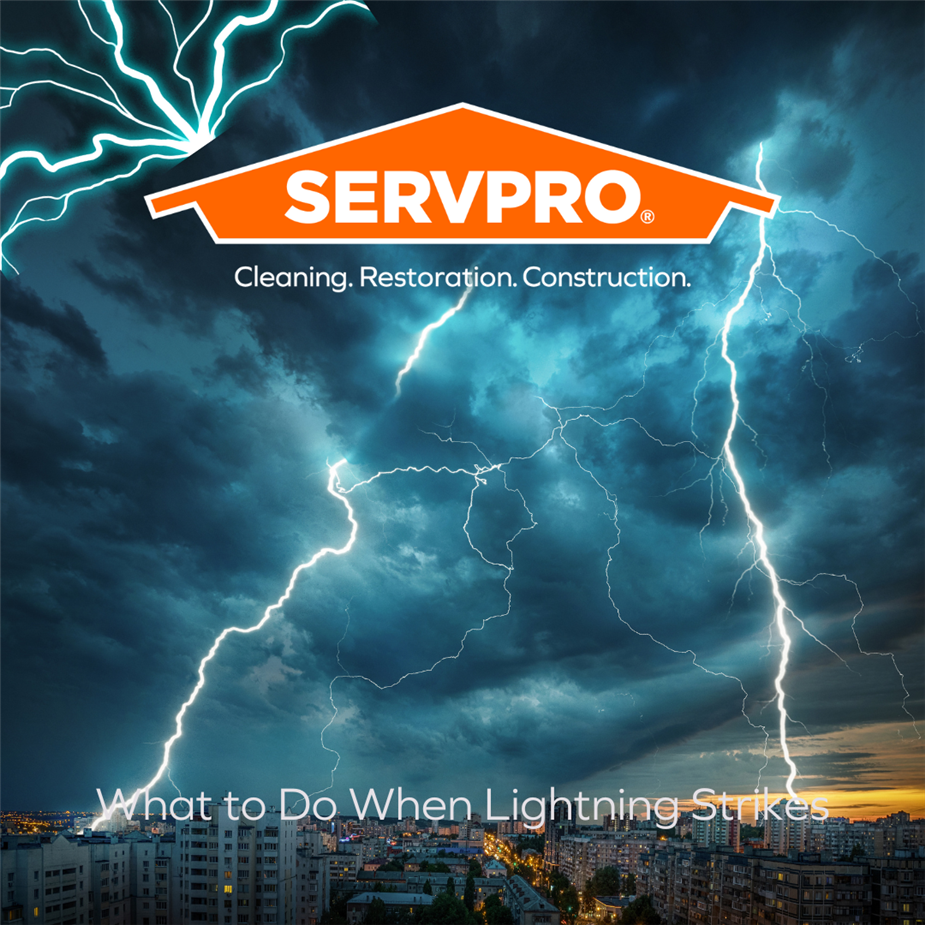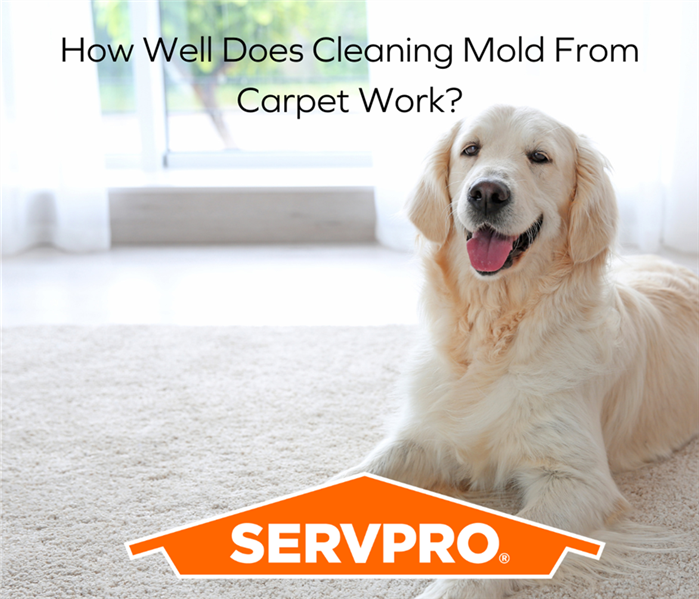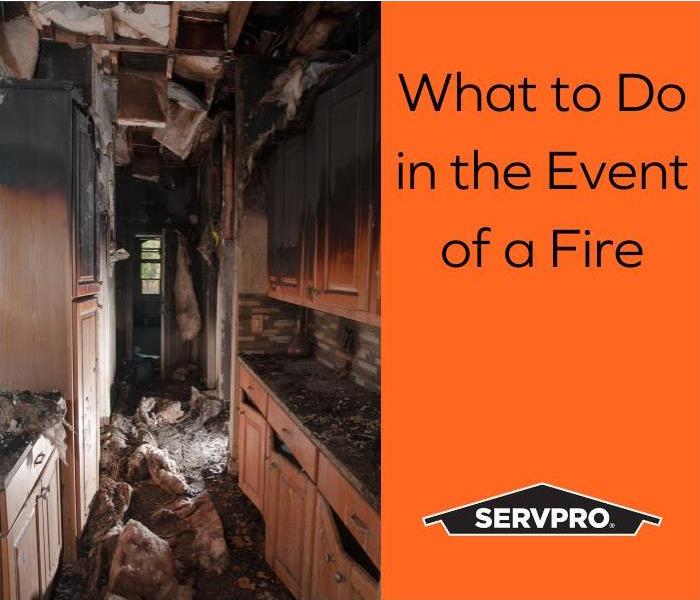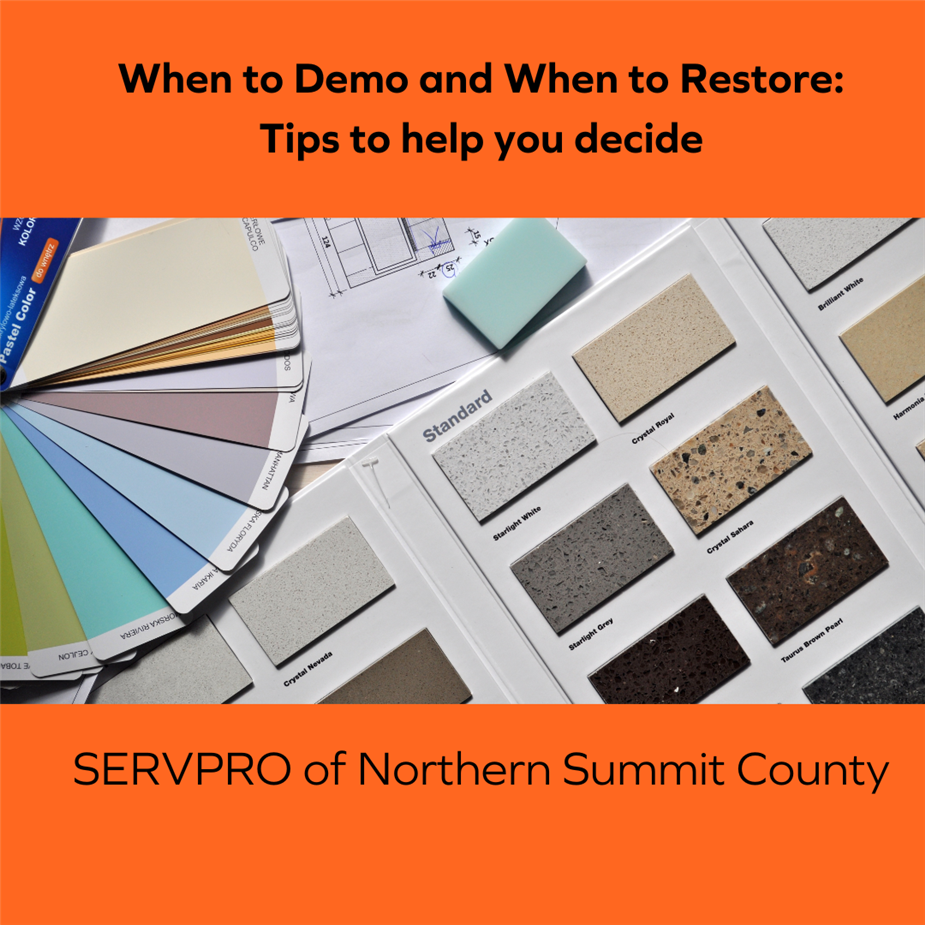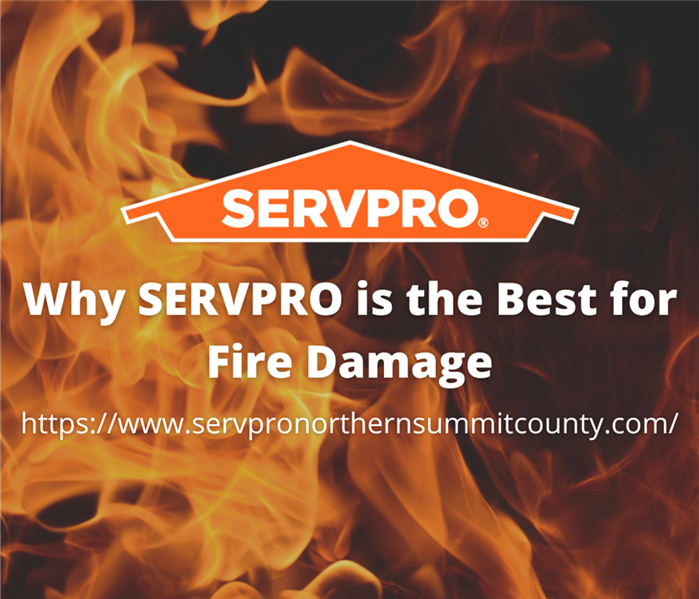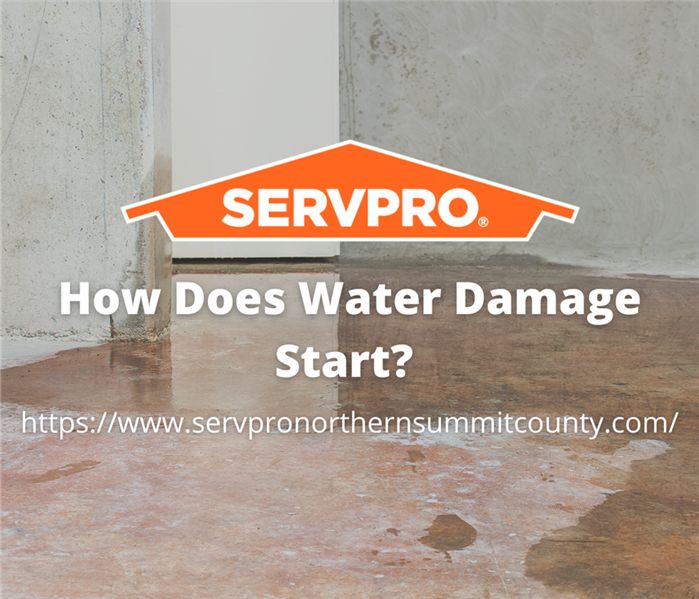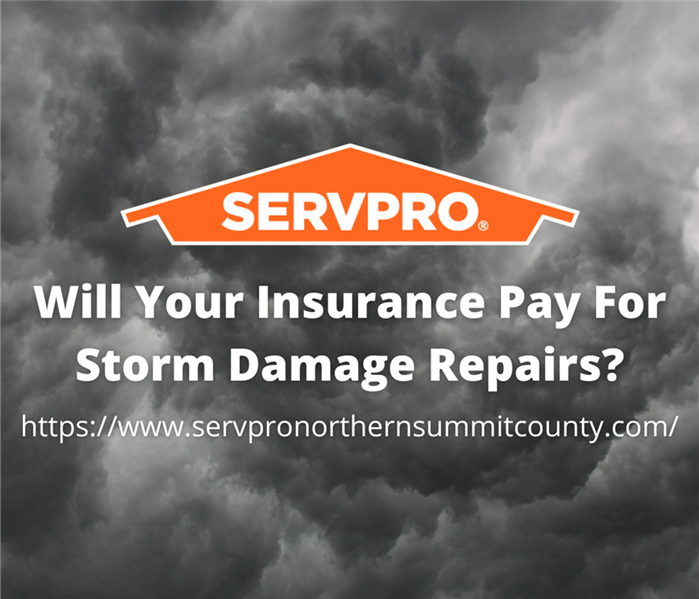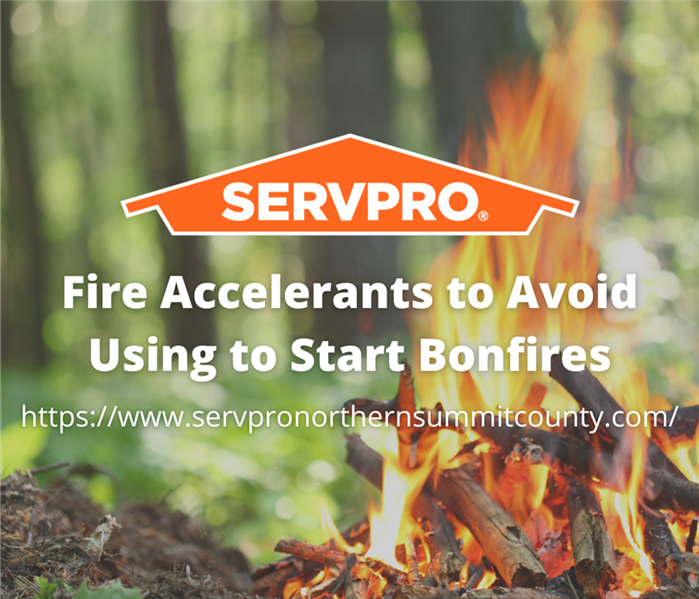Recent Posts
What to Do When Lightning Strikes
7/24/2023 (Permalink)
When lightning strikes, it is very important to know what to do in these situations, and to make sure that you are taking the precautions that are needed in these specific occurrences.
Check the Forecast
Staying up to date with the news and keeping it on during storms is your best bet for knowing exactly when the storm will start and when it will end. This also gives you a great gauge on when you will be able to safely go outside.
Don’t Go Outside
You should never voluntarily go outside when it is lightning. You will never know the severity of the lightning until it’s too late, so, in these instances, it’s better to be safe than sorry. If you are outside and not home, make sure to find shelter nearby.
Avoid Water
Bathing, showering, washing dishes, and anything having to do with water are off-limits until the storm has cleared.
Avoid Anything Plugged into an Outlet
Try not to use electronic devices that are plugged into an outlet. With lightning being able to travel through electrical systems, your best bet is to not use anything plugged into an outlet.
Stay Away From Windows
Remaining a safe distance from windows is a great way to be cautious during the event of a lightning storm. Certain windows can conduct electricity, meaning that if you are standing very close to them or touching them, they can electrocute you if lighting strikes at the right time.
There are ways to be cautious during a lightning storm, and make sure you are remembering to always be vigilant and listen to your local news. If lightning strikes and causes a disaster, SERVPRO is here for you 24/7.
How Well Does Cleaning Mold from Carpet Work?
7/24/2023 (Permalink)
Does Cleaning Mold From Carpet Work?
Carpets can get rid easily from water loss, or damage, sparks a bit of controversy. One factor to keep in mind is that unless mold is appropriately removed, the restoration contractor has failed in bringing the structure back to its preloss state. Without removing visible fungus colonies, a risk of sickness remains.
Let’s Set the Scene
Wonder Makers Environmental recently called their local Kalamazoo, MI SERVPRO, one of our sister franchises, to help in the cleanup of a building one of their clients own. Fungus had grown between their monthly checks, and at an impressive rate. A trail of clues led to the culprit: a malfunctioning water heater. Despite the checks, conditions suggested the water heater had been leaking for weeks. The question then becomes, how do you effectively restore the building, clean and dry the carpets, and remove the fungus that had grown exorbitantly? Getting rid of the fungus without the possibility of it spreading or returning, and not placing a health risk to anyone now or in the future due to the water damage is a job that SERVPRO takes seriously.
Delivering Results
Using a HEPA air scrubber, SERVPRO technicians were able to collect airborne spores that may be released by the hot water extraction process and to allow for air movement to speed up the drying of the carpet. After the workers completed their cleaning and restoration measures, Wonder Makers Environmental proceeded to run extensive testing on samples of carpet and air to determine the effectiveness of the remediation operation. The results were in: both air and surface samples were equally impressive. Spores per cubic feet were reduced from over 6,000 to less than 50. For more in-depth information, check out this article. Our work speaks for itself, even in a single case study.
What to Do in the Event of a Fire
7/24/2023 (Permalink)
No one expects to have a house fire. Most know that when you have a fire the first thing you do is call 911, but what do you do when the fire is out?
If you have just experienced a house fire we at SERVPRO hope you and your family are safe and healthy. The first thing to do is check with the fire department to see if it is safe to reenter your home, there can be structural damage and reentering can be dangerous. Call your insurance agent to let them know what has happened and they will then help you navigate the insurance claim process.
After speaking with your insurance agent and the fire department, SERVPRO can come in and survey the damage and give estimates on what can be salvaged. SERVPRO's trained technicians can help save many of your items after damage. It is recommended not to attempt to clean any items yourself as you can further engrain soot and smoke into furniture.
SERVPRO is always here to help and provides 24/7 emergency services.
When to Demo and When to Restore
7/17/2023 (Permalink)
To demolish, or not to demolish, that is the question. In a nod to William Shakespeare’s Hamlet and perhaps one of the most popular lines in English literature, we are constantly faced with this issue in our industry. The decision to demolish, either completely or selectively, versus repair/renovate is sometimes like running the gauntlet.
Whether the loss was caused by fire, flood, wind, or other peril, the single most important factor to consider is safety.
If your client’s home or business has sustained structural damage, it is imperative a registered design engineer evaluate the structure to determine if it has been compromised and if it can be repaired. The local building authority is likely to have some input in this process. The stamped letter/documents from the engineer will need to be submitted to that authority.
A house or building found to be in very poor condition structurally speaking is usually better off demolished. It may be a cheaper and safer option. If the building can be repaired, now the question becomes should the building be repaired? Factors such as historical significance, cost, condition of the house, building code upgrades, etc. should all be reviewed. Insurance carriers will also have some influence on the decision. Depending on the language in the policy, carriers may have the right to consider replacement versus drying, cleaning, or repair.
Demolition Considerations
- Is the property a historic property or in a historic district (aka heritage home)? Is it architecturally significant? There may be historic preservation ordinances and laws to protect historic resources and character. Many cities, towns, and communities establish historic preservation commissions and a process for considering alterations or demolition.
- Investigate the permitting process early in the planning stage. If your client decides to demolish a building, even one that has suffered fire or storm damage, it does not automatically follow that you will get planning/zoning permission to build any replacement structure or to change the use of the site.
- Teardown restrictions can require structures to strictly adhere to the predominant architectural size and standards of the neighborhood.
- Demolition permits usually require site-specific testing for contaminants such as lead and asbestos, prior to demolition. Building materials such as ceilings, ductwork, flooring, roofing, and siding may contain these materials. Disposal of demolition debris that has asbestos-containing material (ACM) can be costly. Consideration should be given to the presence of coolant gases (freon/refrigerant), mercury (fluorescent lamps), and potentially radioactive materials (exit signs). Discovery of an old, underground oil storage tank can also be very costly.
- Utilities must be disconnected, including electricity, gas, cable/phone, sewer, and water. Some cities/jurisdictions, such as Boston, may require you to disconnect utilities all the way to the property curb line or Right of Way (ROW).
- The cost to demolish and rebuild a home or business is highly variable.
- Newly constructed homes tend to be more energy efficient than renovated homes.
- Environmentally critical areas, such as wetlands or steep slopes, have different restrictions.
- Local fire departments may require permits to be pulled and inspections/oversight by the fire marshall.
- If there is a mortgage on the property, your client must involve their bank in the process. The only legal way to tear down a house is to own it outright or to pay off any existing mortgage(s). If the loan balance is less than the value of the land, there could be an issue. Construction loans and/or insurance proceeds could be used to pay off the debt.
Repair/Renovation Considerations
- Renovation/repair is an alternative to demolition, but it may not be the most affordable option. Costs tend to accumulate the further you get into a renovation project and unforeseen problems discovered. Opening up walls, for example, can reveal pest/termite infestations, leaking pipes, mold, deteriorated framing, damaged wiring, cracked foundations, etc.
- Extensive water damage can undermine foundations and footings. This type of damage can be difficult to identify. A thorough inspection of the property should be completed prior to making the decision to repair/renovate.
- Older buildings/homes often have interior layouts that are difficult to rearrange for modern uses. An open floor plan with lots of natural light may not be so easily or cost-effectively accomplished.
- Many homes and businesses were built when building codes were less strict than they are today. Rebuilding or restoring a structure may require meeting more demanding building codes. Even undamaged parts of the structure may be required to be brought up to current building code (plumbing, electrical, mechanical, life safety, ADA, energy, etc.).
- Depending on the extent of the damage, planning and zoning review may also apply to “repaired” buildings. For example, we recently experienced a building that was designated an R-2 usage classification when it was constructed in the 90’s. A partial fire loss caused the local building department and fire department to reevaluate the usage classification as it had changed since the original construction. Ultimately, the classification had to be changed which, in turn, triggered the application of more stringent building and life safety codes. The moral of the story is that, over time, the original approved usage classification of a facility can morph and change into something different despite good intentions from ownership.
- Substantial rehabilitation of historic structures or in a historic district may qualify for significant tax credits.
- In some communities, local government rules encourage substantial renovations over demolition by making it easier, faster, and cheaper to obtain the necessary permits. You may be able to retain the foundation or add on to it. You might also be able to retain a portion of the existing structure or incorporate it into your design thereby allowing you to sidestep local restrictions.
- Deconstruction – the careful removal of building materials to reuse them elsewhere – can provide financial and environmental benefits. Donations are tax-deductible. Recycling building materials can be gratifying for environmentally conscious homeowners. The downside is that deconstruction can take two to three times longer than typical demolition.
- Renovations may require that a lead-safe licensed renovation contractor be engaged.
- Existing commercial buildings undergoing substantial renovations are eligible to become LEED certified under LEED for Commercial Interiors and/or LEED for Existing Buildings upon completion of the renovation and three months of occupancy/operation.
- Repairs/renovations can sometimes be completed in stages. Living expenses can add indirect costs to repair/renovation budgets. The homeowner may be able to live in the home while work is being completed.
No matter which route you choose, demand surges for labor, equipment, and materials are not uncommon after natural disasters – hurricanes, tornadoes, earthquakes, flooding, wildfires, etc. Do your homework and open a dialogue with the local building department, insurance carrier, contractors, vendors, and suppliers. The key is proper planning before you pick up a hammer. Don’t go into a project blindly and hope to stay within budget.
SERVPRO Offers Multiple Specialty Cleaning Services
8/25/2022 (Permalink)
From home cleaning to business cleaning, making sure that either is not harmful to you, your coworkers, or your loved ones healthy is extremely important. Apart from sanitization cleaning, we offer other cleaning services that aren’t your “typical” style. So, why should you choose SERVPRO for cleaning your business or home?
COVID
If you have had a recent outbreak of COVID in your home or business, SERVPRO can help sanitize and make you, those living in your home, or those working in your office feel more at ease.
Odor Removal
If there is an odor in the office, or if you have multiple pets in your home, SERVPRO can help your home or business get rid of the odor. We use state-of-the-art products, equipment, and techniques to rid your home of pervasive odors, and we help by getting to the source and leaving your place smelling and feeling squeaky clean.
HVAC/Air Duct Cleaning
If your ducts are dirty, don’t try and figure out the right way to clean them, trust SERVPRO and our professionals to help you.
SERVPRO has many other services that we specialize in, but making sure that your home or business is nice and clean to help prevent germs and viruses or helping to remove odor from pets is reason enough to trust us! We’re here to help 24/7.
Why SERVPRO is the Best for Fire Damage
8/25/2022 (Permalink)
Fires can happen at any time, and making sure that you are vigilant and quick is a great way to make sure that everything goes smoothly. For the times that you may need more help, SERVPRO is the best for any fire damage you may have.
24-Hour Emergency Service
Our Customer Care Center is ready to take your call, day or night. Contact us today for immediate assistance.
Preferred Vendor Status
Many national and local Insurance companies trust in our 50+ years of experience in cleanup and restoration.
Highly Trained Fire and Water Restoration Specialists
Our professionals have the expertise and equipment needed to get the job done to your satisfaction as quickly as possible.
Easier Insurance Claims Process
SERVPRO will help you navigate the insurance claims process and coordinate the necessary paperwork for a quicker, easier experience.
#1 In the Cleanup and Restoration Industry
We’re a trusted leader in the restoration industry.
SERVPRO is always here to help 24/7 with experience in the industry, and highly trained specialists, an easier insurance claims process, we’re the best option for you.
SERVPRO of Northern Summit Technicians are HST Certified
7/25/2022 (Permalink)
Hiring any professional to come into your home can be overwhelming and stressful, there are so many options available and it’s hard to know who to choose. When the issue in your home is potentially dangerous the stress can be even more apparent. You need to know who you can trust to keep your family safe. At SERVPRO of Northern Summit, all of our technicians are HST certified it is our mission to keep you and your family safe at home.
What is HST certified?
The Health and Safety Technician certification provides required health and safety awareness training for anyone performing restoration or mold remediation. The course is designed to reduce risks and improve safety on the job by providing learners with a good understanding of the key OSHA-mandated health and safety training topics related to restoration and mold remediation.
This course focuses on:
- Local Safety and Health Regulations
- Hazard Assessment / Risk Management and Control Implementation
- Personal Protective Equipment (PPE)
- Safe Walking and Working Surfaces, Ladders, Scaffolds
- Electrical, Hazardous Energy, Confined Space
- Hazard Communication of Chemicals (Global Harmonized System)
- Exit Routes, Emergency Plans / Preparedness and Fire Protection
- Hazardous Materials
- Bloodborne Pathogens and Exposure Control Plans
- Miscellaneous subjects: (Metals, Sharps, Ergonomics, substance abuse and workplace violence)
Why is it important?
IICRC or The Institute for Inspection, Cleaning, and Restoration Certification is a nonprofit that helps to set globally recognized standards for these areas. Ensuring our technicians receive this training gives you confidence in knowing they have the training to provide the highest quality of work and utilize the most effective processes known.
At SERVPRO of Northern Summit, we understand how important it is to feel secure in who you allow in your home to take care of any health or safety concerns. You can trust that our technicians will resolve these concerns professionally and with the knowledge each has learned in the many certifications required to be a SERVPRO technician. If you have health or safety concerns in your home call SERVPRO of Northern Summit today and they will take care of any and all of your needs.
How Does Water Damage Start?
7/25/2022 (Permalink)
Water damage can happen quickly and be difficult to stop. There are a number of events that can get water into your home, which will often lead to water damage. Knowing the reasons water damage starts may help you stop it before the damage is too harsh.
Flooding
Any type of flood can lead to water damage. Floods can leave you with standing water, which will inevitably lead to water damage. If possible, get rid of the standing water as quickly as possible.
Storms
Heavy downfalls of water can also cause water damage. If you have a leaky window or roof, water can get inside of your home, leading to damage. This is especially harmful if the water collects in puddles, as that makes it more difficult to get rid of.
Plumbing
Faulty plumbing is another culprit of water damage. Leaky pipes can lead to a buildup of water, which will ultimately lead to some form of water damage. Inspecting your pipes regularly may help you catch leaks before they become a problem.
Water damage can leave lasting effects on your home, so it is important to take action when you notice it. Hiring a damage restoration specialist will ensure a proper cleanup is completed for your home. If you ever find yourself in need of help cleaning up water damage, contact SERVPRO, faster to any disaster.
Will Your Insurance Pay For Storm Damage Repairs?
7/25/2022 (Permalink)
If a storm hits your neighborhood and your home takes a battering in the winter weather, will your insurance company pay for repairs?
The answer is a qualified probably – but it does depend. Every company writes its own rules and the best thing to do is check the details of your policy so you know exactly what is and is not covered.
And if you are unhappy with the coverage you have, it is easy to upgrade policies or change companies for a better one – but you obviously need to do this before the storm happens.
Most standard homeowner policies do cover damage caused by winter storms – ice, snow, wind, severe low temperatures, and freezing rain. But again – do not take this as proof you are covered, check your policy.
But – and this is an important ‘but’ – standard policies usually do not cover flood damage. So damage to the roof by hail or snow will probably be paid for, but not damage caused to furniture and carpets caused by snow melting into the home.
Flood damage insurance is easily obtained, and can even be a bolt-on extra to your existing homeowner policy, but do not take it for granted and assume it is there without checking.
Another reason to check your policy details is to see if there are any expectations on you as the property owner – some will pay out only if you have handled preventative maintenance to minimize winder damage to your property, such as shutting off the water when not in use, or if you are a snowbird, some policies cease to be effective if the property is unoccupied for extended durations.
Fire Accelerants to Avoid Using to Start Bonfires
7/25/2022 (Permalink)
Bonfires are a great way to stay cozy, especially as the weather cools down. Even though most modern homes have advanced heating systems, there is nothing like cozying up to a warm fire. When starting a fire or bonfire, there are a few accelerators you should avoid for safety. Here is a list of accelerants you should avoid when starting a bonfire:
Treated wood
Treated wood can release toxic chemicals, which can hinder your breathing. Wood that is treated can contain arsenic and other toxic chemicals. When these chemicals are used to burn a fire, they can be extremely harmful and should not be inhaled.
Lighter fluid
Lighter fluid seems like an easy way to start a fire, but it can be very unsafe especially if used improperly. These products are not designed for recreational use. They often contain methanol and petroleum-based chemicals, which are also not meant to be inhaled by humans. If you're starting an indoor fire, do not use lighter fluid. It can damage your chimney and surrounding areas.
Cardboard
Recyclables are good to use for fires because they often help to start a fire very fast. However, using pizza boxes or cereal boxes are also treated with chemicals and should not be burned. Instead of using pizza or cereal boxes, try out small wood or purchase tinder from a camping supply store.
Wet Firewood
Wet firewood should not be used for a fire because when the wood is wet and lit on fire, it can produce toxic smoke. Moist firewood can also lead to a build-up of creosote. Creosote is another chemical that should not be inhaled. While creosote cannot be fully avoided when lighting a fire, damp firewood will lessen the amount of creosote.
Wood Pallets
Wood pallets can be discarded, but not by catching fire. Many pallets have been treated with methyl and also should not be burned. If you are looking to dispose of an old pallet, it can be recycled or made into a cool DIY project.
Driftwood
If you are on vacation and happen to see driftwood on the beach, do not burn it. Even though it can present a beautiful flame, the metal salts that the wood absorbs are also toxic.
If you are struggling with what can be used as an accelerant for your next bonfire, stick to the basics. If you are in double, you most likely should not use it to start a fire. The most common and safe forms of fire accelerants are newspaper, dryer lint, wood shavings, and crumbled paper.






 24/7 Emergency Service
24/7 Emergency Service
